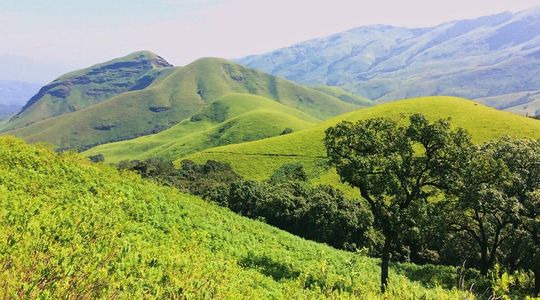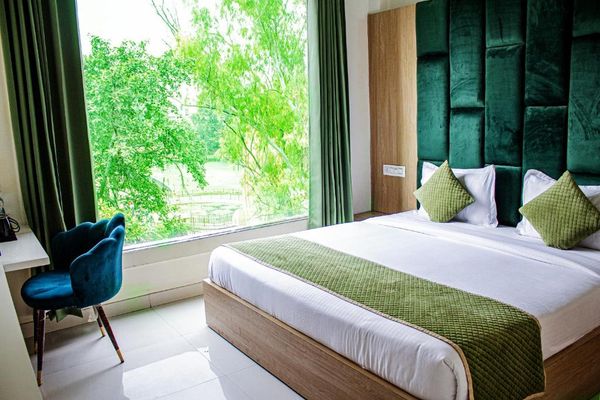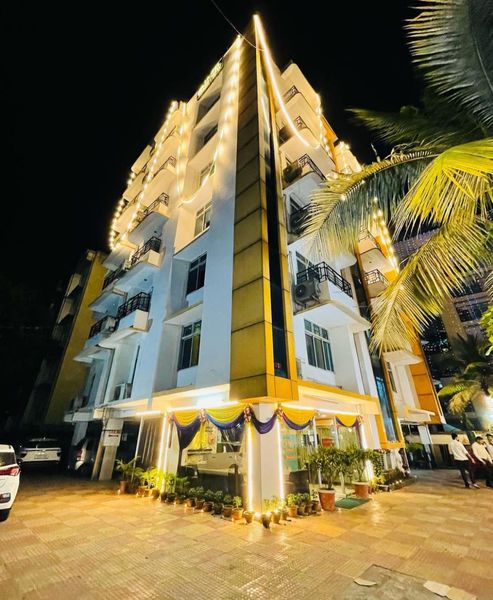Exploring the Untamed Beauty of Kudremukh National Park
 Palakshi Meharwal
18 Apr, 2025
9 mins read
446
Palakshi Meharwal
18 Apr, 2025
9 mins read
446

Tucked away in the heart of Karnataka’s Western Ghats, Kudremukh National Park is a hidden gem that captivates visitors with its unspoiled landscapes, rich biodiversity, and mystical charm. Known for its rolling meadows, dense forests, and mist-covered peaks, this protected area offers an immersive experience for nature lovers, trekkers, and wildlife enthusiasts alike.
A Natural Treasure in the Western Ghats
Kudremukh, which translates to "horse face" in Kannada due to the distinctive shape of one of its mountain peaks, is part of the Chikkamagaluru district in Karnataka. Spanning approximately 600 square kilometers, the national park forms a crucial part of the Western Ghats UNESCO World Heritage Site, an ecologically sensitive zone known for its exceptional biodiversity.
Designated as a national park in 1987, Kudremukh is managed by the Karnataka Forest Department, with conservation efforts focused on preserving its rich ecosystem. The park’s terrain is a blend of rolling grasslands and shola forests, creating a unique mosaic of habitats that support a wide variety of flora and fauna.
Rich Flora and Fauna
Kudremukh National Park is home to a thriving population of endemic and endangered species. The park’s tropical wet evergreen forests serve as a sanctuary for over 200 species of birds, making it a haven for ornithologists and bird watchers. Species such as the Malabar whistling thrush, imperial pigeons, and great hornbills are commonly sighted here.
Mammals such as lion-tailed macaques, gaurs (Indian bison), sambar deer, and the elusive leopard roam freely in the region. Kudremukh also supports populations of Asian elephants and tigers, although sightings of these majestic animals are rare due to their elusive nature and the dense forest cover.
The park’s vegetation includes valuable timber species like rosewood and teak, as well as medicinal plants and orchids that thrive in its humid climate. The biodiversity here not only supports wildlife but also contributes significantly to ecological stability and the livelihoods of local communities.
Trekking in Kudremukh: A Journey Through Wilderness
One of the main attractions of the park is the Kudremukh Trek, which takes adventurers through a breathtaking journey of natural beauty. Considered one of the most scenic treks in South India, it stretches for about 9 kilometers one way and can take up to 5-6 hours to complete depending on pace and conditions.
Trekkers begin their journey from the village of Mullodi, guided through pristine forest trails, gushing streams, bamboo groves, and panoramic meadows. The view from the Kudremukh peak, standing at an altitude of 1,894 meters (6,214 feet), offers a sweeping vista of undulating hills blanketed in green. The feeling of standing above the clouds, surrounded by endless valleys, is an unforgettable reward for those who reach the summit.
Permits are required to enter the trekking route, and the number of trekkers is limited to protect the fragile ecosystem. Visitors are encouraged to follow Leave No Trace principles, minimizing environmental impact and respecting wildlife.
Best Time to Visit
The most favorable time to explore Kudremukh National Park is between October and February, when the weather is cool and the landscapes are lush from the post-monsoon greenery. While the monsoon months from June to September bring heavy rainfall, transforming the park into a verdant paradise, trekking during this period can be challenging due to slippery trails and leeches.
Summer months (March to May) are relatively dry and warmer, but still offer good conditions for hiking and nature walks.
Conservation Challenges and Efforts
While Kudremukh is a wildlife sanctuary, it has also faced significant environmental pressures in the past. Until 2005, a government-owned company called Kudremukh Iron Ore Company Limited (KIOCL) operated in the region. Though it brought economic development, the mining operations caused extensive damage to local ecosystems, including soil erosion and river pollution.
Following persistent legal and environmental advocacy, mining was halted, and significant efforts have since been made to restore the park’s ecological balance. Reforestation programs and stricter enforcement of conservation laws have helped the region recover gradually. Today, the park serves as a model for balancing biodiversity preservation with sustainable tourism.
Getting There and Staying Options
Kudremukh is accessible by road from major cities in Karnataka. The nearest town is Kalasa, located about 20 kilometers from the park. Mangaluru (Mangalore) is the closest airport, roughly 100 kilometers away, and also serves as the nearest major railway junction.
Accommodation options around Kudremukh are primarily eco-resorts, homestays, and forest guest houses. Staying in nearby villages such as Kalasa or Samse provides a rustic, immersive experience and allows travelers to connect with the local culture.
Travel Tips for a Responsible Visit
- Carry eco-friendly supplies such as reusable water bottles and avoid plastic.
- Hire local guides to enrich your experience and support community-based tourism.
- Wear appropriate trekking gear, including waterproof shoes and insect repellent.
- Respect park regulations and wildlife; maintain silence to observe animals naturally.
- Plan your trek in advance and obtain permits through the forest department.
Final Thoughts
Exploring Kudremukh National Park is not just a journey into the wilderness—it’s a chance to witness one of India’s most enchanting and biodiverse landscapes. The park's pristine beauty, coupled with its ecological significance, offers a rare opportunity to reconnect with nature in its most authentic form.
Whether you’re a trekking enthusiast, wildlife photographer, or a curious traveler seeking tranquility, Kudremukh promises an unforgettable experience steeped in natural wonder and adventure. As you traverse its misty trails and serene forests, you’ll come away with more than memories—you’ll carry a deeper appreciation for the delicate harmony of life that flourishes in the wild.
Written By:
Palakshi Meharwal



Hotels at your convenience
Now choose your stay according to your preference. From finding a place for your dream destination or a mere weekend getaway to business accommodations or brief stay, we have got you covered. Explore hotels as per your mood.


